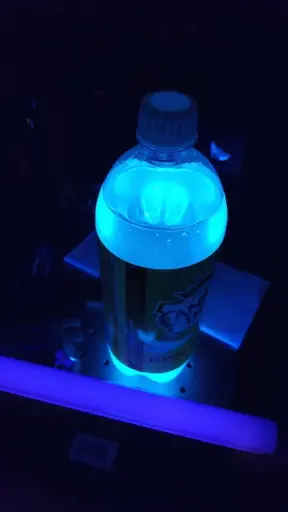Invisible to human eyes, light emanating from everyday objects reveals a treasure trove of information.
 Andreas Velten
Andreas Velten
And Andreas Velten, an assistant professor in the Department of Electrical and Computer Engineering at the University of Wisconsin-Madison, has a plan to create specialized cameras that can selectively capture unseen signals without becoming overwhelmed by a massive abundance of data.
“There’s a very limited amount of data that is necessary for identification,” says Velten. “The amount of data you need to capture depends on what you need to know.”
Supported by a prestigious CAREER Award from the National Science Foundation, Velten is working to develop specialized cameras for detecting fluorescence, which is the phenomenon by which objects absorb energy from the ambient illumination in their environment and then emit light of a different wavelength.
Fluorescence is what makes some species of jellyfish glow green and it’s why the quinine in tonic water causes some cocktails to appear bright blue under a black light.
Almost every material has its own unique fluorescence signature—absorbing and emitting light at specific wavelengths and for unique lengths of time. That means cancer cells fluoresce differently than normal tissues, minerals glow differently than the soil that surrounds them, and diseased crops emit light differently than healthy plants.
 Andreas Velten is developing specialized cameras for capturing fluorescence, which is the property that causes tonic water to glow blue under a black light. Photo: Andreas Velten.
Andreas Velten is developing specialized cameras for capturing fluorescence, which is the property that causes tonic water to glow blue under a black light. Photo: Andreas Velten.
“Fluorescence increases the dimension of the color space, so you can tell a lot more about what you’re looking at,” says Velten.
But those extra dimensions mean more information for cameras to capture on top of the visible details in an image.
That’s a staggering amount of data, most of which isn’t relevant to the task at hand.
For example, a prospector searching for mineral deposits only needs fluorescence data for a few specks of ore, at specific parts of the fluorescence spectrum, and with specific time delays, and a farmer looking to monitor the health of his crops doesn’t need to image acres and acres of individual healthy plants.
“What people are doing right now is saying, ‘let’s capture everything and then figure out how to deal with the data afterwards,’” says Velten. “It’s time consuming, you have to capture a ton of data, and you don’t care about most of it.”
That’s why Velten aims to create cameras that can be more selective and ignore the irrelevant portions of an image. Depending on the application, that might mean measuring fluorescence in just a few pixels and for very specific combinations of wavelengths and decay times out of a complex scene.
“We will build flexible imaging systems where we can decide what parts of the sample we want to capture,” says Velten.
The cameras will deploy adjustable filters and internal mirrors to pick up only the components that matter. For a given task, optimization algorithms will help narrow in on the essential pixels and identify what parts of an image may be ignored.
“In general, capturing everything is not practical,” says Velten.
In addition to developing the cameras, Velten hopes to open people’s eyes to the hidden fluorescence that surrounds them in their daily lives. He plans to set up an exploration lab in the lobby of the Discovery Building where people can sip fluorescent cocktails, see glowing rocks and find tiny beads buried in sand.
“I think it’s a nice way to show what fluorescence really is,” says Velten. “You can make things very visible that otherwise would be hard to find.”